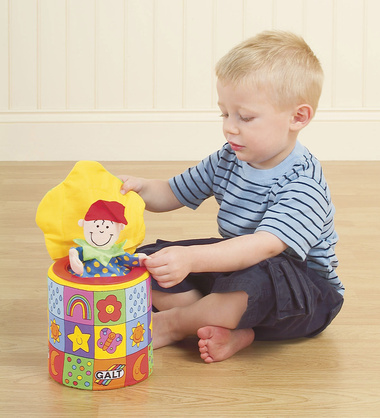Condry & Condry (1976)
 Condry & Condry carried out a study to see how knowing the gender of a child affects how we interpret or label the child's behaviour. You can use this study for the following learning objectives:
Condry & Condry carried out a study to see how knowing the gender of a child affects how we interpret or label the child's behaviour. You can use this study for the following learning objectives:
Approaches to research in developmental psychology.
Enculturation (sociocultural approach)
Formation of gender identity and social roles
The original study is available here.
Parents are socializing agents - that is, they play a key role in modeling for children appropriate behaviour, as well as directly teaching them what is appropriate behaviour within the society.
Condry and Condry argue that we often "see what we want to see." This includes our interpretation of what it means to be a boy or a girl. They further argue that when we act on what we think we see, then we have a direct influence on children when we communicate those expectations. In particular, when adults communicate to children what is appropriate or not appropriate for a child's gender, this can play a key role in the development of gender roles. The aim of their study was to determine if adults communicate sex differences to children indirectly through their language and behaviour.
The sample was made up of 204 participants - 45 males and 159 females, aged 18 to 25. All were university students from upstate New York. The research method was an experiment using an independent samples design.
The participants were shown a short film that showed a 9 month old child being exposed to four different stimuli - a teddy bear, a jack-in-the-box, a doll and an obnoxious buzzer. The child was exposed to each stimulus five times in the video.
The participants all saw the same video and they were asked to fill out a questionnaire while watching the video. The first part of the questionnaire asked them about their experience with children. The second part asked them to rate the level of emotion displayed by the child on a scale of 1 - 10. They were asked to rate the intensity of the emotion as well as the level of pleasure, anger and fear. The final section of the questionnaire asked them to choose words to describe the child's overall behaviour from word pairs, such as fast-slow, aggressive-passive, strong-weak.
Participants were randomly given one of two versions of the questionnaire. Half of the participants received a questionnaire that asked them to watch the film about David (a boy) and the other half were told that they were watching a film about Dana (a girl).
There were two key findings in the study. In situations where the situation was unambiguous, there was no difference in emotional ratings. So, everybody loves a good teddy bear, so the responses were very positive (pleasure). Everybody hates an obnoxious buzzer, so the responses were unanimously negative (fear and anger). However, in the more ambiguous tasks, there was a significant difference in the ratings of the children's emotional response. In the jack-in-the-box situation, when the boy began to cry, their behaviour was seen as anger; when the girl began to cry, it was seen as fear. Anger was seen as a more masculine response.
When asked to describe the children, the boy was seen as more active and stronger than the girl, even though the participants all viewed the same child. Male participants showed a larger difference in their responses then female participants.
- The study uses an experimental method to determine how identifying the sex of a child influenced how an adult perceived their behaviour. The study is highly controlled and can be easily replicated to establish reliability.
- The sample is problematic as they university students, not parents. It is difficult to generalize these findings.
- The task is highly artificial. The participants were asked to choose one of the two words on the final part of the questionnaire; they may have chosen "best fit" but not really felt that this was a true characteristic of the child.
- The study lacks predictive power. Even though it shows that the gender of the child may influence the interpretation of their behaviour, it does not show that these labels will then have an effect on the child's development of a gender identity. This is an assumption that is made by the researchers that is not necessarily supported.
- Replications of the study have not yielded consistent results.

 IB Docs (2) Team
IB Docs (2) Team
